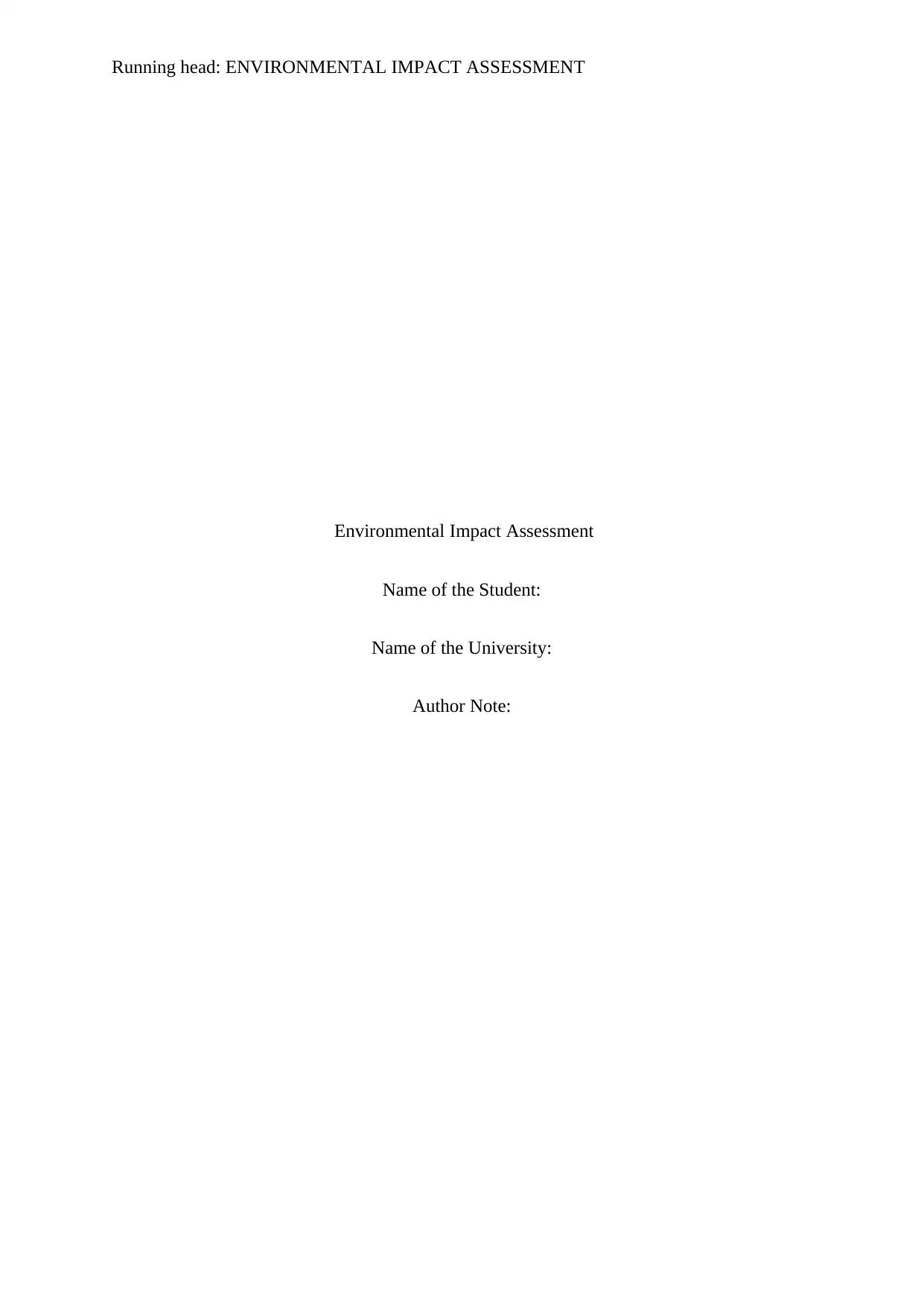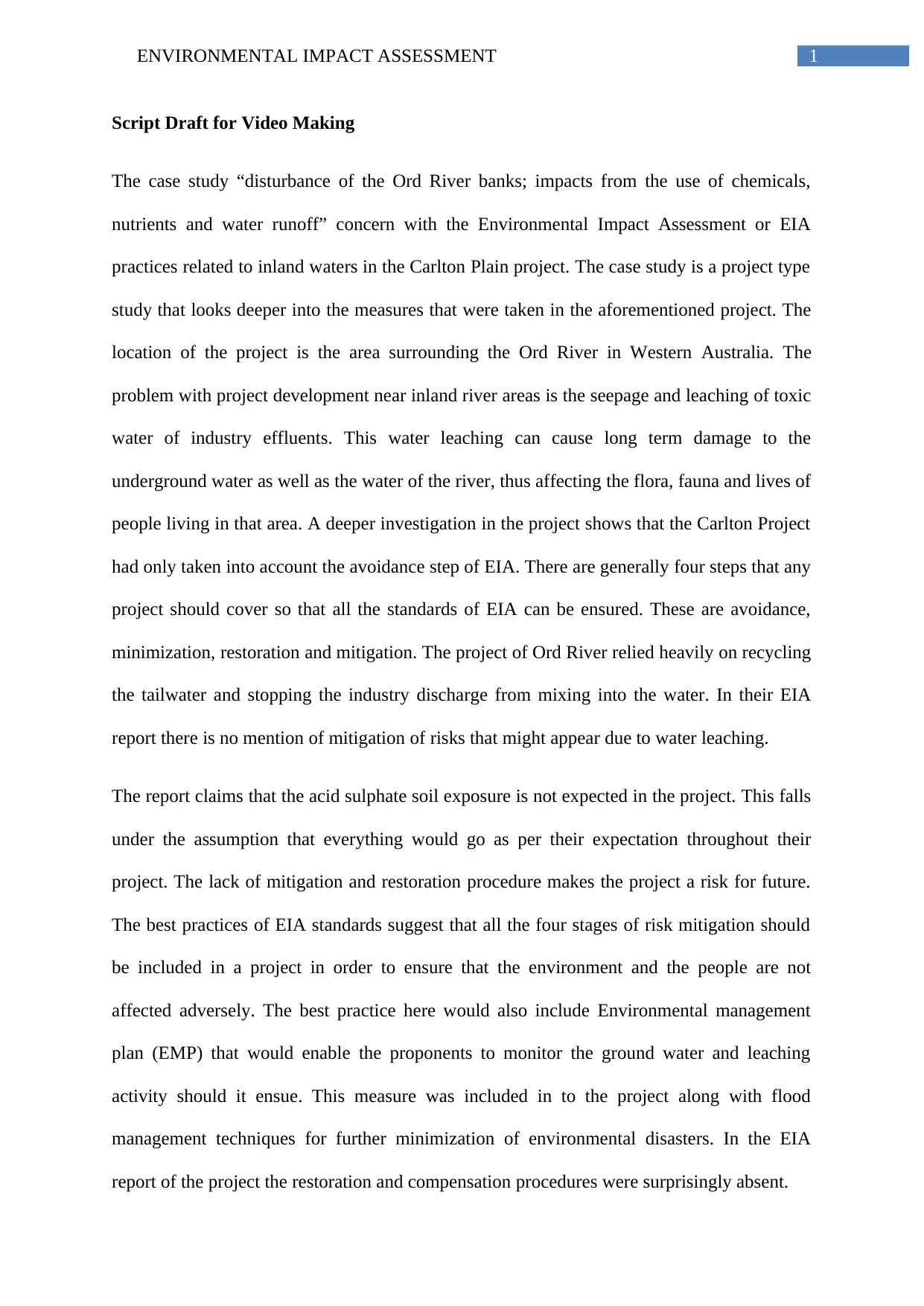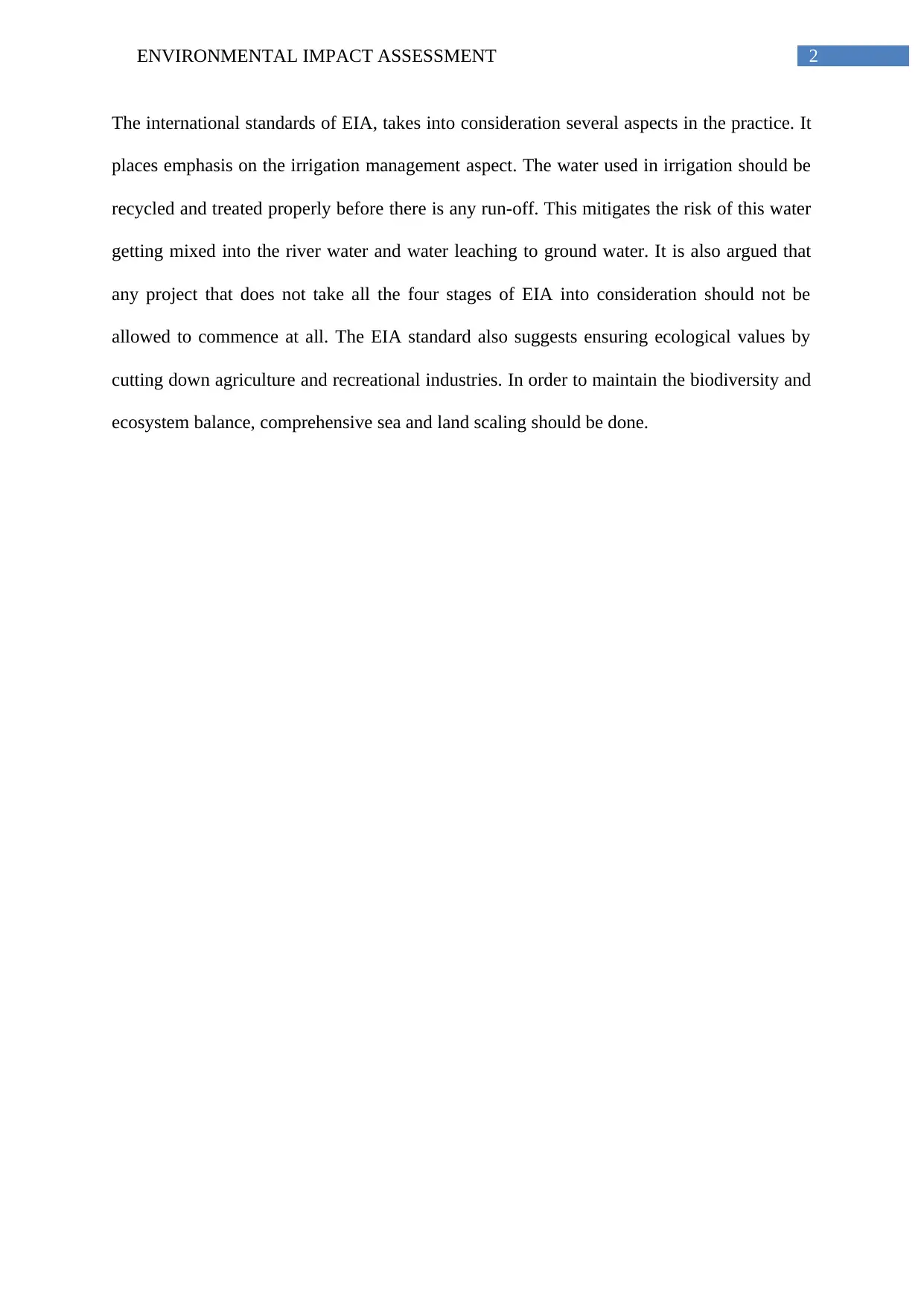Critical Review of Carlton Plain Project's EIA: Video Analysis
VerifiedAdded on 2022/12/30
|3
|541
|85
Project
AI Summary
This assignment involves a critical review of an Environmental Impact Assessment (EIA) case study, specifically focusing on the Carlton Plain Stage 1 Project and its handling of inland waters, particularly concerning the Ord River. The project requires the creation of a 2-3 minute video that examines the project's application of the mitigation hierarchy in relation to international best practices. The video should briefly describe the case study, identify the environmental management topic (disturbance of the Ord River banks; impacts from the use of chemicals, nutrients, and water runoff), explain relevant international EIA best practices, and critically analyze how the environment was managed in the case study, including the use of sources and EIA procedural materials. The analysis highlights the project's heavy reliance on the avoidance step of the mitigation hierarchy, particularly recycling tailwater and preventing discharge, with a lack of mitigation and restoration procedures, potentially posing risks. The assignment emphasizes the importance of including all four stages of risk mitigation (avoidance, minimization, restoration, and mitigation) and the inclusion of an Environmental Management Plan (EMP) to ensure environmental protection. The video assesses the extent to which the case study upheld best practice EIA standards, focusing on a critical aspect of analysis.
1 out of 3









![[object Object]](/_next/static/media/star-bottom.7253800d.svg)